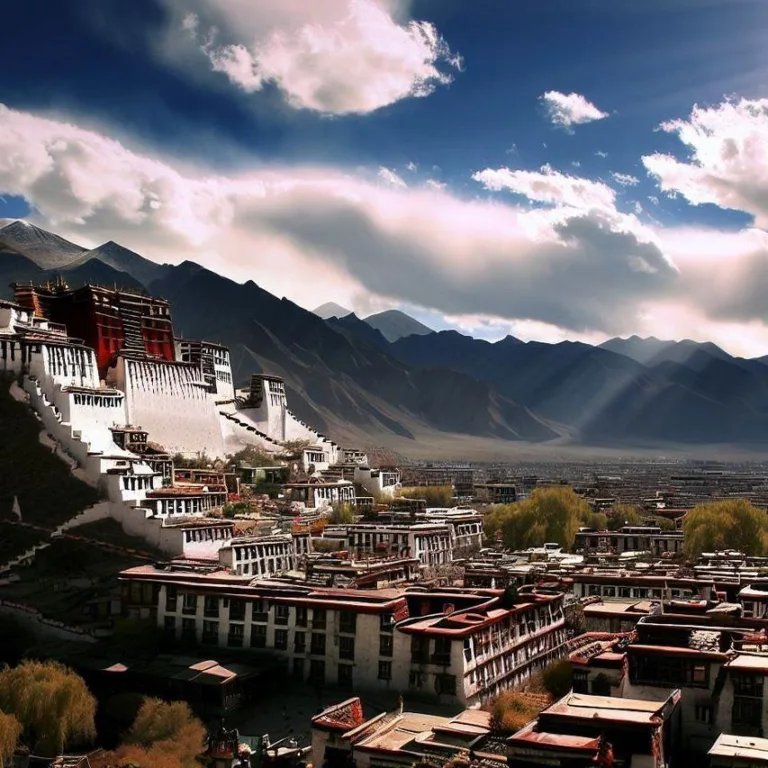Welcome to our comprehensive guide to Lhasa, a city that stands as a true jewel nestled in the heart of the mighty Himalayas. Lhasa, often referred to as the „Roof of the World,“ is not just a destination; it’s an experience that captures the essence of Tibetan culture, spirituality, and breathtaking landscapes. In this article, we delve into the rich tapestry of Lhasa, from its history to its vibrant cultural heritage and the awe-inspiring sights it offers.
The enchanting history of lhasa
Lhasa’s history is as enchanting as the city itself. Steeped in centuries of tradition, it has been the spiritual and administrative capital of Tibet for centuries. The city’s origins trace back to the 7th century when King Songtsen Gampo founded the Jokhang Temple, a sacred site that remains a hub of devotion to this day. Over time, Lhasa grew into a thriving center of trade and spirituality, attracting pilgrims, traders, and travelers from various corners of the world.
The Potala Palace: A Symbol of Majesty
The iconic Potala Palace, a UNESCO World Heritage Site, stands tall as a symbol of Lhasa’s majesty. This architectural marvel was originally constructed in the 17th century and served as the winter residence of successive Dalai Lamas. Perched on a hill, the palace boasts a stunning blend of Tibetan, Chinese, and Indian architectural styles. Its numerous halls, chapels, and chambers offer a glimpse into the opulent lifestyle of Tibetan royalty and the spiritual devotion embedded in every corner.
Cultural treasures and spiritual sanctuaries
Lhasa is a treasure trove of cultural and spiritual wonders. The Barkhor Street, a lively pilgrimage circuit, encircles the Jokhang Temple and is a vibrant marketplace where you can immerse yourself in the sights, sounds, and aromas of traditional Tibetan life. The temple itself is a spiritual haven, its interior adorned with intricate murals, sacred statues, and devout worshippers.
The Sera Monastery and Drepung Monastery are two other significant spiritual landmarks that offer a glimpse into the monastic life and the study of Tibetan Buddhism. The debates held among monks at Sera Monastery are renowned, showcasing the intellectual depth and fervor of Tibetan Buddhist philosophy.
Natural Splendors and Panoramic Views
As you explore Lhasa, don’t miss the opportunity to bask in the natural splendors that surround the city. The Norbulingka Palace, a serene retreat, features meticulously manicured gardens and tranquil lakes, offering a peaceful escape from the urban bustle. For panoramic views of Lhasa and the Himalayas, a visit to the Drepung Monastery is a must. The vantage point from this monastery provides a breathtaking panorama that captures the essence of Lhasa’s awe-inspiring setting.
Frequently Asked Questions (FAQs)
1. What is the best time to visit Lhasa?
Lhasa is best visited during the months of April to October when the weather is relatively mild and conducive to exploration. Summers offer clear skies and pleasant temperatures, making it an ideal time for outdoor activities.
2. How do I obtain the required permits to visit Lhasa?
Travelers to Lhasa need to obtain a Tibet Travel Permit through a registered travel agency in China. This permit is necessary for both domestic and international visitors and is usually arranged as part of a guided tour package.
3. Are there any high-altitude concerns for travelers?
Yes, Lhasa’s elevation is around 3,656 meters (11,975 feet). Acclimatization is important to avoid altitude sickness. Spend a few days in Lhasa before embarking on more challenging journeys to higher altitudes in the region.
Embrace the splendor of lhasa
Lhasa is a city that captivates the soul with its spiritual aura, cultural richness, and breathtaking landscapes. Each corner tells a story of devotion, resilience, and the enduring spirit of a people deeply connected to their roots. As you wander through its ancient streets, adorned with colorful prayer flags fluttering in the wind, you’ll discover that Lhasa is not just a destination—it’s an odyssey of the heart and mind.
Viz také:






